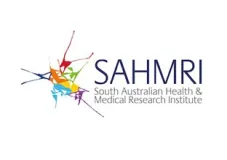Vision of health: Life-changing medical research for SAHMRI’s next decade
Guided by its mandate to push the boundaries of what’s possible, South Australia’s only independent health and medical research institute, SAHMRI, has begun its next chapter by launching a host of exciting projects with the potential to make a life-changing impact.

Having recently established a world-first screening program in Adelaide that tests for safe and sub-optimal omega-3 levels in pregnant women, researchers at SAHMRI are furthering their efforts to reduce the risk and harms of preterm birth.
The SAHMRI Women and Kids theme has confirmed that magnesium sulphate infusion, a medication widely used during pregnancy, significantly reduces the risk of cerebral palsy and death for very preterm babies.
Lead researcher Dr Emily Shepherd says the results are significant for prematurity research, with magnesium sulphate being one of only two proven prevention strategies for cerebral palsy.
“Our review now demonstrates with high certainty that magnesium sulphate, administered intravenously to women at risk of very preterm birth, can reduce the risk of cerebral palsy and death for their children up to two years of age,” Shepherd said.
While magnesium sulphate is now a standard treatment for preterm cerebral palsy prevention across the globe, Shepherd says many questions remain unanswered, and that’s the focus of her research now.

“To maximise the life-changing benefits of magnesium sulphate we need to know much more about which pregnant women to treat and how; along with its effects on children at school age and beyond,” she said.
You might like
SAHMRI is also making strides toward better understanding dementia, with neuroscientist Dr Tim Sargeant and radiochemist Dr Edward Robins currently developing a cutting-edge brain scan to assess how well an individual’s brain can keep itself clean and healthy by recycling waste.
Recent studies have shown a clear association between declining memory function and the build-up of sticky plaques in the brain, called beta-amyloid.
Researchers suspect brains amassing this plaque over time may also have reduced self-cleaning capacity.
The PET scan uses special molecules labelled with radioactive isotopes to track which parts of the brain are struggling to recycle waste.
The long-term goal is to be able to intervene with tailored treatment before serious damage occurs.

“This new scan allows us to visualise a living brain and watch how effectively it’s cleaning itself in real time,” Sargeant said.
“We’re aiming to catch warning signs in individuals around the ages of 50 to 60, well before the onset of Alzheimer’s symptoms in most people.”
Another chronic condition SAHMRI scientists are working toward reducing is type 2 diabetes among the state’s Aboriginal communities, where half of those over 50 live with the disease—a much higher rate than in any other sector of the population.
Diabetes brings with it a range of related conditions, including the risk of amputation, eye health issues, circulatory conditions and heart attacks.
Working closely with Indigenous communities and health services, SAHMRI’s Wardliparingga Aboriginal Health Equity team, led by Associate Professor Odette Pearson, has a multi-pronged approach to delivering tangible improvements in diabetes outcomes.
It includes supporting community-wide availability of diabetes data, primary health care workforce training and community-led prevention and management initiatives.
“Multiple approaches are needed to change the trajectory of diabetes and its consequences in the Aboriginal community,” Pearson said.
“While this research is specifically focused on benefitting Aboriginal and Torres Strait Islander communities, the insights we gain will have the potential to enhance diabetes management across Australia and within Indigenous populations internationally.”
SAHMRI has also positioned South Australia as a leader in children’s brain cancer research through the state’s first paediatric brain tumour biobank.
Project leader, Professor Jordan Hansford, says ‘Brain Turbo SA’ is enabling researchers and clinicians to build on current knowledge of brain tumour types and better understand how survivors’ health is impacted over time.
“We’re learning about survivorship, we’re learning about diseases and, as a result, we aim to apply that knowledge to continually improve patient care,” Hansford said.
“The most exciting part is this is only the beginning.”
Utilising this growing body of evidence, researchers are now studying the effects of specific tumour types on functions such as cognition, cardiovascular health and hearing.
These projects are just some of the ways SAHMRI is advancing evidence-based treatment options and transforming lives, creating a healthier future not only locally but across the nation and the world.
But this important work can’t continue without community support to keep the equipment switched on and the experiments running.
To find out more, visit sahmri.au/imagine.







